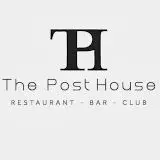The Post House - Stafford
Over 300 views on venues4hire.org

The Post House - The Post House
The Post House description
Pub / Restaurant
Medium (1-150)
THE OLD POST OFFICE
The house as it is today was built by William Chetwynd at around 1715. William Chetwynd was Member of Parliament for Stafford from 1734 until 1770 when he died.
In 1747 during the turbulent parliamentary elections William Chetwynds house was attacked by an angry mob which broke in. Much damage was done to the house including broken windows and smashed furniture. The Riot Act was read and many of the mob arrested.
After his death at the age of 86 the house was left to his grandson, also William. After a series of tenants the house was let to William Horton. Horton was responsible for the manufacture of shoes in Stafford on a significant scale, the first of its kind. Thousand of pairs of shoes were produced by outworkers and sold to the army and outlets in London. At the beginning of the 1800s Horton was employing up to 1000 people thus making him a wealthy man.
It was during this time that Richard Brinsley Sheridan, who was now Member of Parliament for Stafford was a frequent visitor to the house bringing with him his friends from London who could boost Horton’s business. Horton in return would assist Sheridan with his financial difficulties.
The house was very much the hub of elite society and was well known for this fact. There were many balls and parties and on two occasions during race week in the 1790s Sheridan would bring his friend The Prince Regent to stay at Chetwynd House.
In 1806 Sheridan was no longer M.P. for Stafford. This brought an end to the houses high society life style.
The house was later occupied by Edward Knight who married Horton’s niece Elizabeth. Knight was a highly respected doctor who ran his practise from the house. He later went on to be a magistrate and mayor of Stafford.
Up until the 1840s under the name of Horton and Turner, shoes were still manufactured at the rear of the house while Knight continued to live there.
During a legal wrangle over Knights estate the house was eventually bought by Knights son John. After several people tried to make use of the old shoes works at the rear of the house, by the beginning of the early 1900s the building became too derelict.
Over the coming years the house was let to series of prominent doctors until it was put up for sale in 1909.
In 1914 when the lease on the Post Office, which was then in Market Square expired Chetwynd House was bought. Although it was feared the house would be changed and its character lost this was not the case. Many original features are still in existence.
The house as it is today was built by William Chetwynd at around 1715. William Chetwynd was Member of Parliament for Stafford from 1734 until 1770 when he died.
In 1747 during the turbulent parliamentary elections William Chetwynds house was attacked by an angry mob which broke in. Much damage was done to the house including broken windows and smashed furniture. The Riot Act was read and many of the mob arrested.
After his death at the age of 86 the house was left to his grandson, also William. After a series of tenants the house was let to William Horton. Horton was responsible for the manufacture of shoes in Stafford on a significant scale, the first of its kind. Thousand of pairs of shoes were produced by outworkers and sold to the army and outlets in London. At the beginning of the 1800s Horton was employing up to 1000 people thus making him a wealthy man.
It was during this time that Richard Brinsley Sheridan, who was now Member of Parliament for Stafford was a frequent visitor to the house bringing with him his friends from London who could boost Horton’s business. Horton in return would assist Sheridan with his financial difficulties.
The house was very much the hub of elite society and was well known for this fact. There were many balls and parties and on two occasions during race week in the 1790s Sheridan would bring his friend The Prince Regent to stay at Chetwynd House.
In 1806 Sheridan was no longer M.P. for Stafford. This brought an end to the houses high society life style.
The house was later occupied by Edward Knight who married Horton’s niece Elizabeth. Knight was a highly respected doctor who ran his practise from the house. He later went on to be a magistrate and mayor of Stafford.
Up until the 1840s under the name of Horton and Turner, shoes were still manufactured at the rear of the house while Knight continued to live there.
During a legal wrangle over Knights estate the house was eventually bought by Knights son John. After several people tried to make use of the old shoes works at the rear of the house, by the beginning of the early 1900s the building became too derelict.
Over the coming years the house was let to series of prominent doctors until it was put up for sale in 1909.
In 1914 when the lease on the Post Office, which was then in Market Square expired Chetwynd House was bought. Although it was feared the house would be changed and its character lost this was not the case. Many original features are still in existence.
Venue suitability
This venue is suitable for the following uses:
Venue facilities
Other venue facilities
We don't currently hold any detailed information about the rooms at this Venue.
If this is your Venue or Hall please use the Adopt link on the right to add more detailed information about this Venue.
If you wish to hire this Venue or Hall please use the contact details on the overview tab.
Please encourage every Venue to take a few minutes to 'Adopt' their listing and add unique content and photos.
